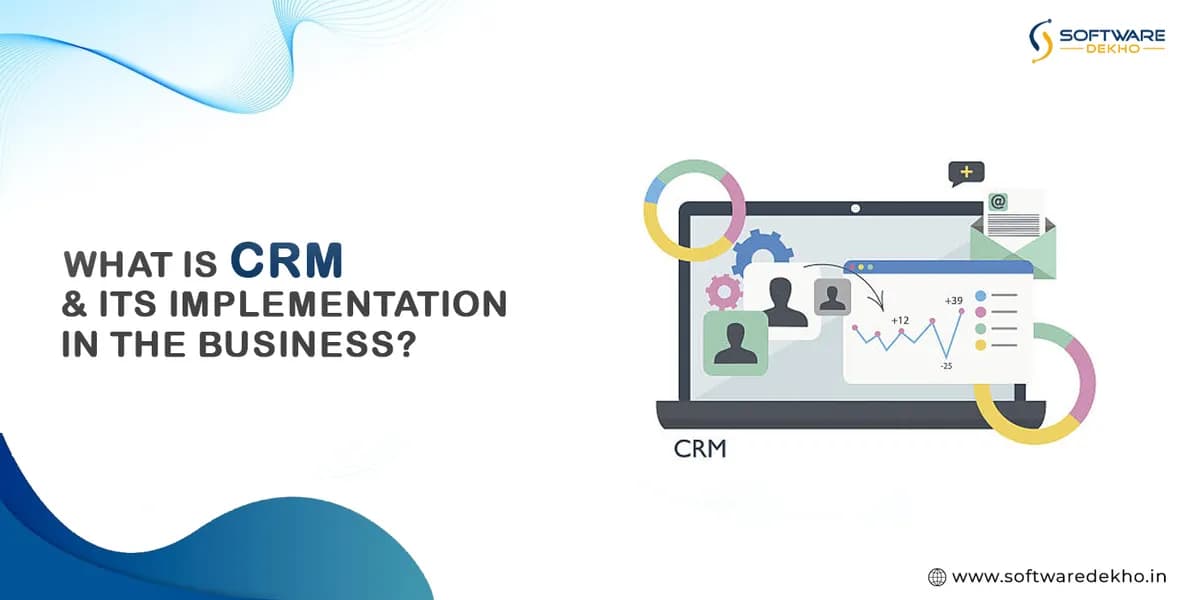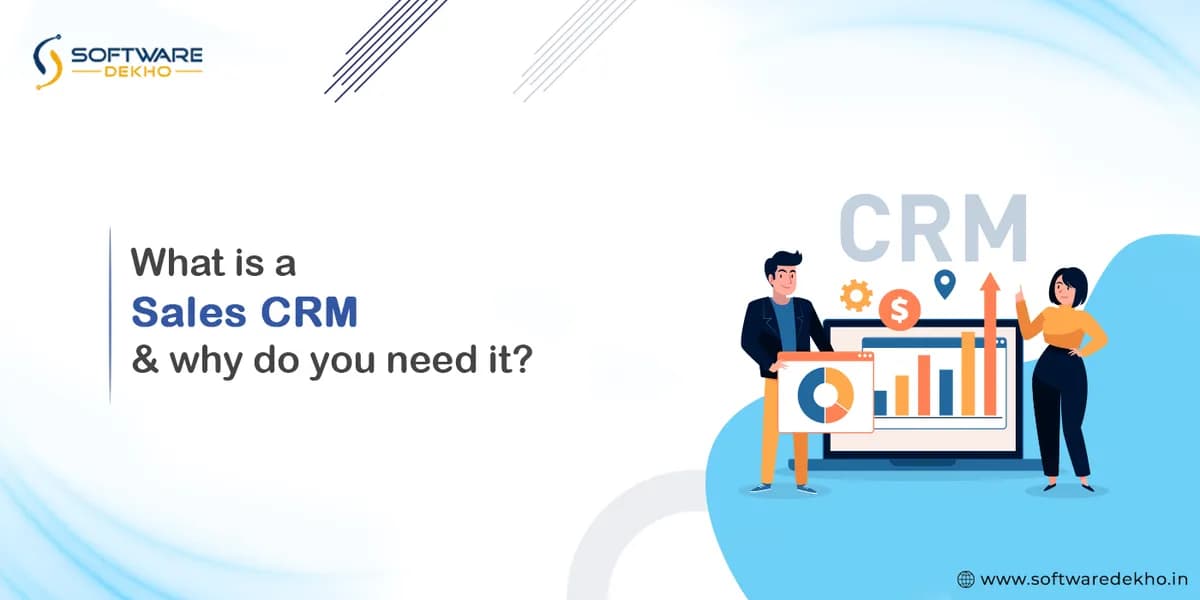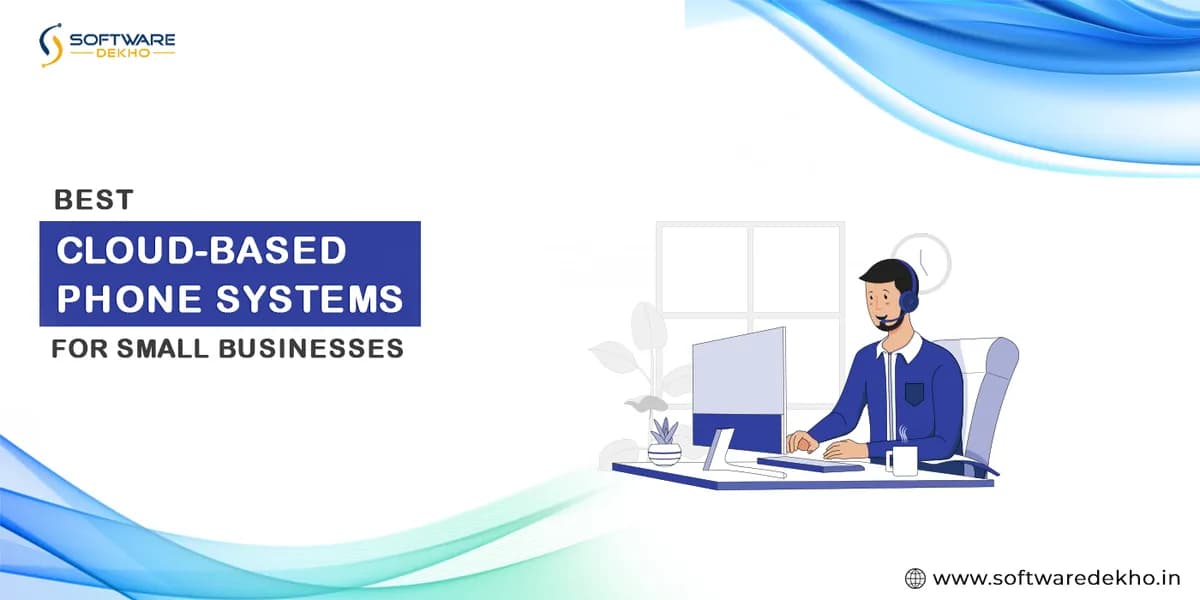What is CRM and its Implementation in the business?
Maintaining excellent connections with your clients is no longer optional in today's competitive business climate when customer loyalty is a valuable commodity; it's the foundation of success. Customer relationship management (CRM) systems have emerged as the story's heroes, providing organizations with a consolidated platform for efficiently managing all client interactions. The days of clumsy filing systems and cluttered rolodexes are over. CRMs provide a simpler approach, encouraging better internal cooperation, increasing customer happiness, and, ultimately, generating revenue development.
Cloud-Based CRM
The CRM software marketplace has shifted dramatically in recent years. Cloud-based solutions have become the preferred option for many firms, providing several benefits over traditional on-premise software.
- Flexibility: Even when attending a client meeting across town, your sales force may easily access customer data and update lead statuses from their smartphones or tablets. With cloud-based CRMs, teams may use the system from any location with an internet connection, giving them this kind of freedom. For remote teams and mobile employees who must remain connected and productive while on the go, this is revolutionary.
- Scalability: CRMs on the cloud are designed to expand. As your company's demands change, you can quickly add users or extend functionality—regardless of how big or small your organization is. By doing this, the infrastructure limitations that accompany old software are removed, guaranteeing that your CRM expands with your company and long-term safeguards your investment.
- Integration: Social media sites, accounting software, and marketing automation platforms are just a few of the business tools you may already be using with cloud-based CRM. By doing this, you can view your client data more comprehensively because there is no longer a need for manual data entry across several platforms. This gives you the ability to develop more focused marketing efforts and provide more meaningful, individualized consumer experiences.
Must Read: What is a Sales CRM and why do you need it?
The AI Revolution in CRM
AI is rapidly changing the way firms approach CRM. AI automates monotonous operations, provides greater insights into client behavior, and enables more tailored experiences. Here are some of the primary AI-powered capabilities that are transforming modern CRMs:
Automated lead scoring: AI systems can find patterns in a large quantity of customer data and forecast which leads have a probability of being actual customers. Sales teams can prioritize their efforts by concentrating on high-value prospects with a better chance of closing. An increase in income and conversion rates is the final result.
Sentiment analysis: Understanding the Customer Voice: AI-powered sentiment analysis tools can analyze customer feedback from various sources, such as social media posts, emails, and online reviews. This allows you to understand how customers perceive your brand or product. By monitoring sentiment in real-time, you can proactively identify potential issues or opportunities and take steps to address them, ultimately improving customer satisfaction and loyalty.
Predictive analytics: Tools using artificial intelligence (AI) analyze previously collected information to find patterns and trends that human analysts might not see right away. Perhaps you're able to predict future events and find hidden insights.

10 Steps of CRM Implementation
It takes careful planning and precise execution to implement a CRM, which is a big task. To guarantee a successful CRM setup, follow these 10 crucial steps:
Identify Your Business Needs:
Before embarking on your CRM journey, take a deep dive and identify your specific business objectives and the challenges you're looking to address. This will help you choose a CRM solution that aligns perfectly with your goals and priorities. Are you struggling with lead management, inconsistent customer service experiences, or a lack of data-driven insights? Pinpointing these areas will guide you towards a CRM with functionalities that address your specific needs.
Evaluate CRM Vendors:
A Comparative Analysis: Research and compare different CRM vendors to find the one that offers the features, functionality, and pricing structure that best cater to your specific needs. Consider factors like industry experience, customer reviews, scalability, and the ease of use of the platform. Don't be afraid to request demos and free trials to get a firsthand feel for the different CRM systems available.
Optimize Internal Processes:
Ensure your existing internal processes are efficient and well-suited for automation before implementing a CRM. Streamlining your operations upfront will maximize the benefits of your CRM and minimize disruptions. For instance, if your sales team relies on a cumbersome manual process for lead qualification, consider automating this step with your CRM.
Quantify the Benefits:
Setting Measurable Goals (continued): Clearly define the expected benefits of implementing a CRM, such as increased sales, improved customer satisfaction, or greater efficiency. Establish measurable goals and key performance indicators (KPIs) to track the success of your CRM implementation and demonstrate its impact on your business. This could involve metrics like conversion rates, customer churn rate, average resolution time for customer service tickets, or the number of marketing leads generated.
Assemble a CRM Team:
Building Collaboration: Involve key stakeholders from across your organization, including sales, marketing, customer service, and IT departments, in the CRM selection and implementation process. This ensures the chosen CRM meets the needs of all departments and fosters buy-in from the entire team. A well-rounded CRM team can provide valuable insights during the selection process and ensure a smooth rollout across different departments.
Develop a Realistic Budget:
Determine the total cost of ownership for your CRM, including upfront implementation costs, ongoing subscription fees, user licenses, and any additional expenses such as training or customization. Develop a realistic budget that takes into account your financial resources and constraints. Don't be afraid to negotiate with vendors to get the best possible deal.
Plan for Future Growth:
Choose a CRM that can scale with your business as it grows and evolves. Make sure your CRM can support future growth by taking into account elements like user scalability, customisation possibilities, and integration capabilities. A scalable CRM ensures you won't need to switch systems as your business flourishes.
Phased Rollout:
Implement your CRM in phases rather than trying to do everything at once. Start with a small pilot program involving a limited number of users or departments, such as your sales team. This allows you to identify and address any challenges in a controlled environment before rolling out the CRM to the entire organization.
Software Integration:
Ensure that your CRM integrates seamlessly with other software and systems used within your organization, such as accounting, marketing automation, and e-commerce platforms. This eliminates data silos and fosters a more streamlined workflow across departments. Consistent data flow also allows for more accurate reporting and analysis.
User Adoption is Key:
Provide comprehensive training and ongoing support to ensure that your team is comfortable using the CRM and understands its value. Appreciate feedback and quickly resolve any issues or problems that arise. User adoption is crucial for maximizing the ROI of your CRM investment. Consider offering incentives or recognition programs to encourage employees to actively use the system.
CRM: A Constantly Changing Environment
As new trends and technology emerge to satisfy the ever-changing demands of organizations and consumers, the CRM environment is always shifting. We anticipate additional innovation in CRM as AI develops, including more advanced predictive analytics, improved automation capabilities, and more astute personalization tools. Businesses may use CRM to gain a competitive edge and create better, more lucrative client connections by being educated and embracing these improvements.
You must conduct thorough research and read user reviews to choose the best software for your needs. So, take a look at our website to understand better!
Let's Talk about Software!






